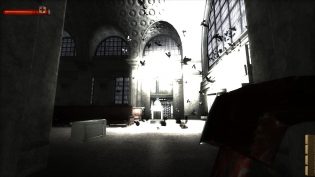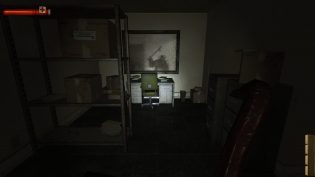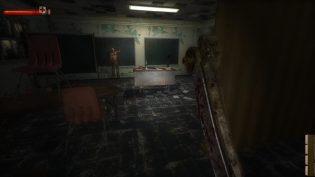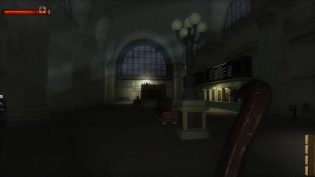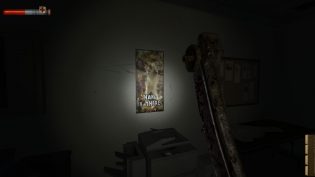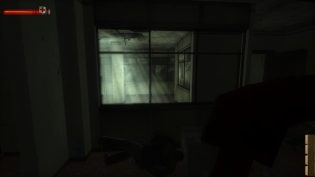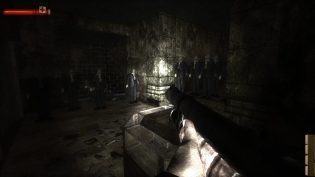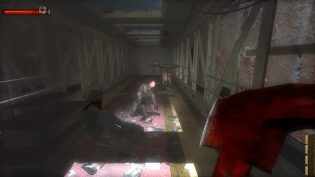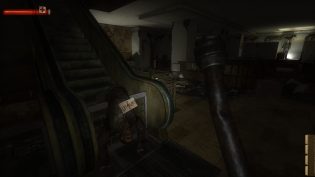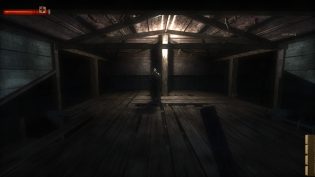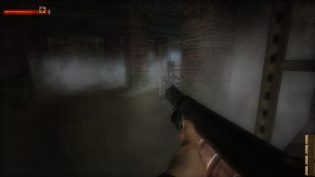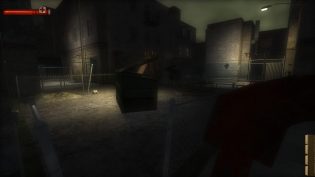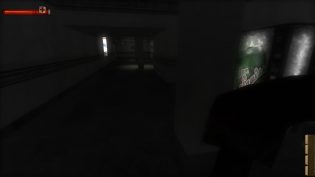O tempora is a series of retrospective posts where I play games from ages before to see if they stood the test of time.
Of course, I couldn’t replay F.E.A.R. without additionally replaying another great release from Monolith Productions of 2005 (PC version was released in 2006). Especially since both F.E.A.R. and Condemned are similar in several regards. They’re both set in minimalist run down locations, both mix realism and supernatural, both have shockingly good enemy AI and highly interactive environment (for 2005, though, not a lot of games attempted to do similar things since then) and both tell the story in two ways – via a conventional narrative and via notes, messages and other items that piece together the narrative. But F.E.A.R. was a cinematic bombastic FPS first, so its approach to horror was far more in your face, far more shock-focused to go along with its fast gameplay. Condemned does things differently – it’s careful, brooding and slowly swallowing you into madness.
Ethan Thomas, the playable character of the game, is “not like the others”, just like with the Point Man in F.E.A.R. He can survive serious injuries and has such a powerful intuition that he can basically see the past. Which is obviously helpful in his detective work in FBI where he does something akin to psychological profiling for serial killers. Unlike F.E.A.R., where Paxton and his clone army were an anomaly in a mostly normal city, Ethan lives in Metro City where violence and madness became the norm by the time the game starts. Police are afraid to even patrol some of the worst parts of town where citizen, homeless people and junkies can get violent with no warning. This inexplicable violence is overshadowed only by the fact, that the same parts of town have birds flocking to them and instantly dying, scattering the places with their corpses.
One of the main reasons Condemned works so well to make you uncomfortable and anxious, if not scared, is how locations feel quite mundane. It feed on the fears most modern society people might have – just making a wrong turn at night and finding yourself in a bad neighborhood, without knowing where you are and ability to call for help. Every house, every corner, every subway station, every old store can be dangerous. Every tight alley can be a deadly trap. Music in this game is also mainly built from ambient city noise. Never really giving you obvious hints of danger, never really trying to fit the heavy action that might be happening on the screen. Just sounds of an abandoned house you decided to walk in. And might never walk out.
One of the biggest praises the game got was for the combat system. It looked extremely interactive, giving you the option to pick up wooden planks, tear pipes from the walls, use broken down tables, drawers, signs and use all of them as weapons. And this had some neat details as well, like electricity shutting down when you tear a piece of an electric conduit or seeing parts of the column collapse as you take the plank that held it together. It looked cool when you did it, but when AI did it – it felt even more amazing. The enemies in this game will use whatever means they find to attack you. They will wait in ambush, fully aware that the only way to progress is through them. They will try to get a weapon before attacking you if they lose one. They will blindside you and gang up on you (though, can hit each other as well).
And if you find firearms, or an enemy does (and they will use them if you leave it laying around), the ammo you have in it is all you get. You can use it for melee afterwards, but obviously it’s better to use an axe in that case. This actually works similarly to what you’d expect in a survival horror game. It’s best to be careful with your resources and save ammo for the moment when you really need them. Best to remember where the items you couldn’t pick up stayed in case you need them later. And best be careful with every shot you make.
What I loved a lot was the use of weapons as tools for solving problems, and not just combat problems. An axe could take down a door, a sledgehammer could break a padlock, a crowbar could unlick a jammed door, a spade could cut the electricity to an electronic lock. Of course, some of these felt a bit contrived – why wouldn’t a sledgehammer break down a door, – it was a still nice adventure-like use of items that also reminded of survival horror. Also, apart from weapons, you had a set of evidence collecting tools which were used not as often as one might like, but every time they were needed it was extremely fun.
All of this was also enhanced by the varied level design, which never lets you feel comfortable, always keeps you alert. Most levels try to focus on ideas and concepts that might never be reused again, just to keep you on edge constantly. There’s a completely open level that is unlike anything else in the game. There’re are plenty linear levels, yet some of them might suddenly require you to backtrack through most of it again, changing and switching things up. It sometimes gives you a combat challenge in a tiny corridor, with little room to maneuver. And then it can open up into a set of what clearly feel like combat arenas and yet have no enemies there at all. You get levels where the story is more or less straightforward crime thriller and also levels where you’re not sure if what you’re experiencing is even real. You never know what the game will throw next at you and even when you start noticing clear telltales of tropes and design decisions used in other games, the game might use that against you and do something completely different.
And I really loved that the game never gives you a clear answer to anything. Ethan might be getting crazy, maybe that three story fall was far more deadly than we thought. Maybe Ethan’s work with serial killers had a far darker effect on him. There’s a conspiracy and a cult brought up, but all of that, along with supernatural, might not exist, might all be a hallucination or whatever else. And unlike the sequel to this game, which gives very clear explanations to everything, and unlike so many sequels to the original couple of Silent Hill games, this game is very comfortable with just giving you enough answers that you don’t feel like you learnt nothing, yet also no clear one single answer, so you keep guessing. This game is far more interested in just exploring human violence and madness, rather than trying to explain it.
Despite some annoyances, like the “interactive cutscenes” where you’re kind of in control, but also kind of restricted with invisible walls, and despite the fact that the game can occasionally look not particularly pretty, and not in the intentional way, Condemned: Criminal Origins still amazes me. It has fantastic sound design, great creative level design and is full of details, down to some disturbing elements like enemy teeth flying out when you hit them, and staying as debris on the ground. It’s dark and twisted, but not reveling in its violence. If you haven’t played the game before and are in town for a great thriller/horror, definitely give Condemned a go.


